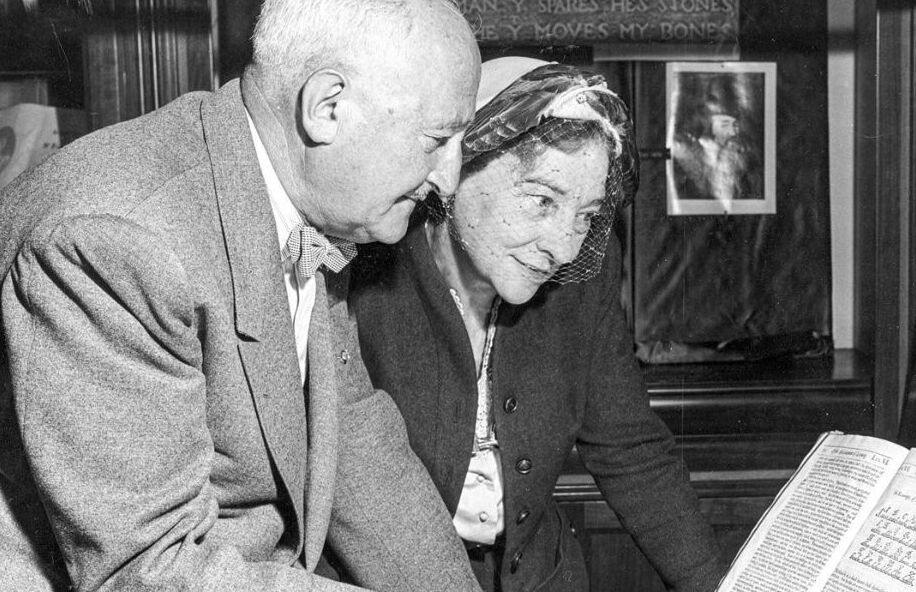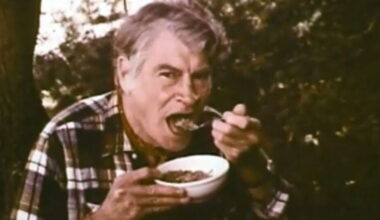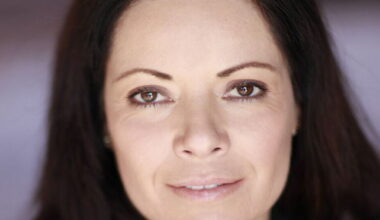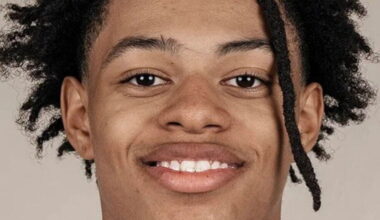Early Life and Education
| Name | Elizabeth Smith Friedman |
|---|---|
| Born | August 26, 1892 – Huntington, Indiana |
| Parents | John Marion Smith and Sopha Strock Smith |
| Siblings | 9 surviving of 10 children |
| Religious Background | Quaker |
| High School Graduation | Circa 1910–1911 |
| Colleges Attended | College of Wooster (1911), Hillsdale College (1912–1915) |
| Degree | English Literature, 1915 |
Raised on a farm in Huntington, Indiana, Elizabeth was the youngest of ten children. She studied Latin, Greek, German, and English from an early age. Financially independent even during college, she borrowed tuition from her father with interest—reflecting a disciplined and ambitious mindset.
Cryptologic Career Beginnings
| First Cryptologic Work | Riverbank Laboratories, 1916 |
|---|---|
| Initial Role | Cipher research assistant on Shakespeare-Bacon theory |
| Key Colleague | William F. Friedman |
| Marriage | May 1917 |
After visiting the Newberry Library in Chicago in 1916, Elizabeth learnt about cryptography from George Fabyan’s Riverbank Laboratories. She swiftly graduated to more complex codebreaking after being hired to decipher Shakespeare’s cyphers. William Friedman and her discovered cypher theory problems and became professional partners and wives.
World War I and Government Service
| WWI Military Role | Army Signal Corps Consultant, 1917–1919 |
|---|---|
| Location | Washington, D.C. |
| Contribution | Trained first U.S. cryptanalysts |
| Specialization | Military codebreaking and instructional programs |
During World War I, Elizabeth and William helped establish the first systematic cryptanalysis training program for U.S. military personnel. Their work laid the foundations of modern American cryptographic efforts.
Prohibition Era and U.S. Coast Guard
| Year Joined Coast Guard | 1925 |
|---|---|
| Messages Decoded Annually | ~12,000 |
| Unit Established | 1931 – First Coast Guard Cryptanalysis Unit |
| Major Opponent | Organized crime syndicates, including Al Capone |
| Primary Tool | Radio signal interception and decryption |
Between the wars, Elizabeth reentered public service to combat Prohibition-era smuggling. Working with the Coast Guard, she intercepted and deciphered thousands of coded radio messages from bootleggers and traffickers. Her courtroom testimony helped convict major players in narcotics and alcohol crime rings.
World War II: Strategic Intelligence
| World War II Assignment | U.S. Navy Intelligence (ONI), reassigned from Coast Guard |
|---|---|
| Spy Networks Exposed | Axis agents in South America, German command links |
| Major Case | Velvalee Dickinson (Doll Lady case) |
| Confidentiality Period | Until declassification in 2008 |
| Key Contribution | Prevented attacks on Allied ships, including Queen Mary |
Despite being reassigned under male officers during WWII, Elizabeth’s codebreaking was crucial in dismantling Nazi spy networks operating in the Western Hemisphere. She also assisted the FBI in exposing covert communications disguised as letters about dolls—work for which others received credit publicly.
Later Career and Legacy
| Post-War Employer | International Monetary Fund |
|---|---|
| Collaborative Publications | The Shakespearean Ciphers Examined (1957) |
| William F. Friedman Death | 1969 |
| Elizabeth’s Death | October 31, 1980 – Plainfield, New Jersey |
| NSA Recognition | NSA Hall of Honor (1999), Friedman Building (2002) |
| Ship Named in Her Honor | USCGC Friedman (WMSL‑760), launched in 2020 |
After WWII, Elizabeth worked for the IMF and helped organize and publish cryptologic research. Although bound to silence during her lifetime, her wartime work was declassified in 2008, revealing her extensive contributions. Honors now include recognition by military and intelligence institutions and a national resolution.
The Friedman Family
Husband: William F. Friedman
| Born | 1891 – Kishinev, Russian Empire |
|---|---|
| Immigrated to U.S. | Early 20th century |
| Major Achievements | Broke Japanese “Purple” code, helped found NSA |
| Notable Honors | Medal for Merit (1946), National Security Medal (1955) |
| Marriage | May 1917 to Elizabeth Smith Friedman |
A pioneer in cryptanalysis, William transitioned from plant genetics to become one of the most celebrated American codebreakers. The Friedmans worked as a team throughout their lives, jointly producing landmark cryptographic scholarship.
Children
| Name | Born | Occupation/Notes |
|---|---|---|
| Barbara Friedman | October 14, 1923 | Later became Barbara Atchison |
| John Ramsay Friedman | July 28, 1926 | Served in U.S. Air Force; donated family archives |
By donating to military historical archives, John Ramsay preserved much of the Friedman legacy. Barbara also preserved her parents’ tale.
Parents and Siblings
| Father | John Marion Smith (1848–1923) |
|---|---|
| Mother | Sopha Strock Smith (1851–1917) |
| Siblings (Select) | Ethel Leona, Lena Alcinda, Clyde William, Raymond Francis |
| Birth Order | Youngest of 10 children (9 survived infancy) |
Elizabeth excelled academically in a Quaker family that valued literacy and civics. She and one sister attended college, rare in early 20th-century rural Indiana.
Descendants and Extended Family
| Family Historians | Steve and Amy (nephew and niece) |
|---|---|
| Archives Contributed | 1920s–1940s family photographs and documents |
| Preserving Institutions | George C. Marshall Foundation |
Today, family members actively participate in maintaining and publicizing the Friedman legacy, helping historians and institutions reconstruct her impact.
FAQ
When was Elizabeth Smith Friedman born?
August 26, 1892, in Huntington, Indiana.
What was her role during World War II?
She cracked Axis spy codes in South America and aided in key espionage cases.
Who was her husband?
Leading American cryptologist William F. Friedman co-founded modern American cryptography.
Did she have children?
Barbara Friedman (1923) and John Ramsay Friedman (1926).
What is she most known for?
Being America’s first female cryptanalyst and pioneering WWII and Prohibition codebreaking.
How many messages did she decode per year during Prohibition?
Approximately 12,000.
Was her work public throughout her lifetime?
No, most of it remained classified until 2008.
What were her educational achievements?
Hillsdale College awarded her an English Literature degree in 1915.
What military branch did she assist during WWII?
Primarily U.S. Navy Intelligence and indirectly the FBI.
Has she been officially recognized?
Yes, through multiple honors including NSA Hall of Honor and a U.S. Coast Guard ship bearing her name.



